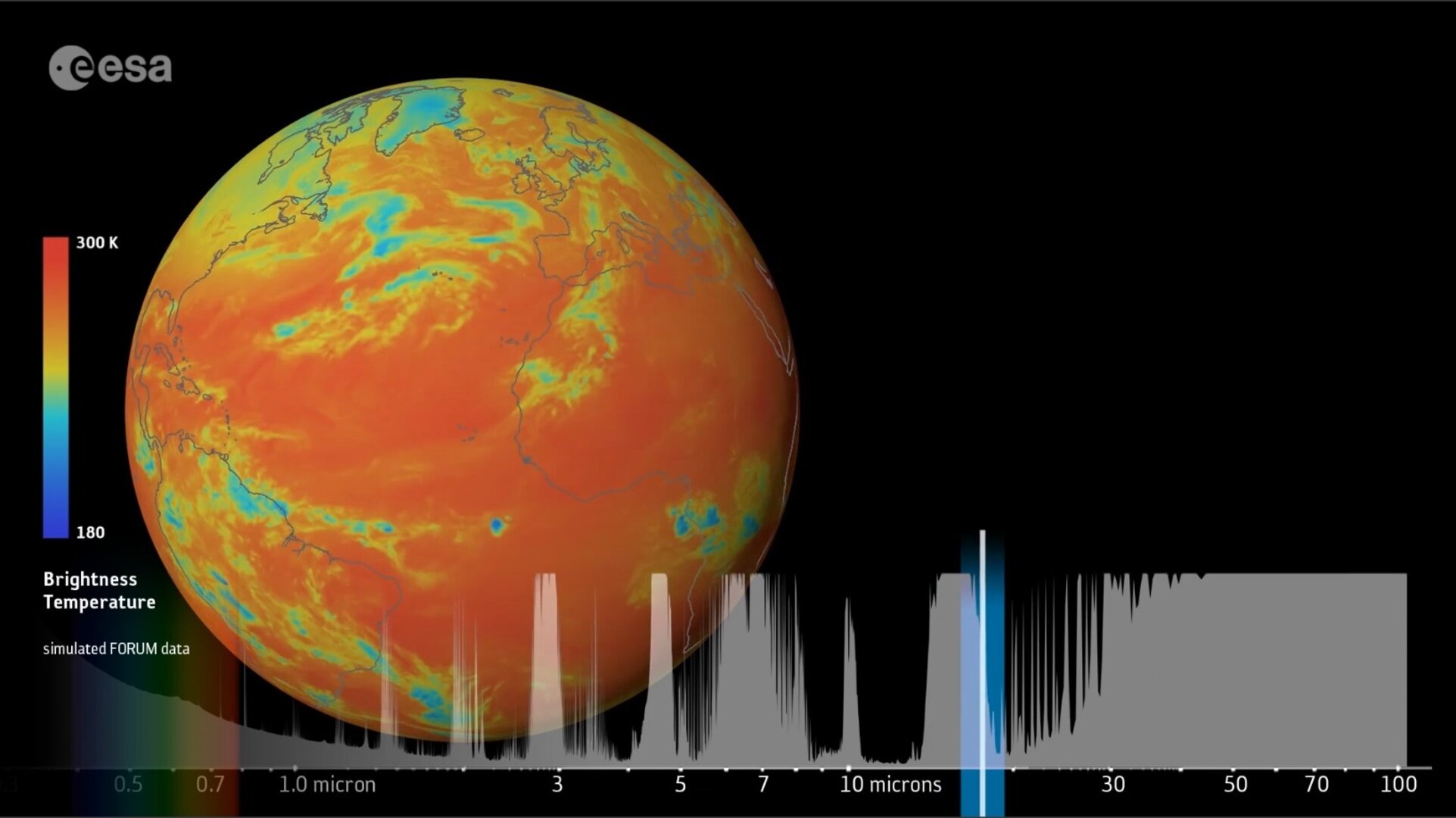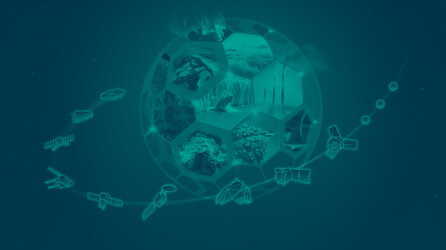Introducing FORUM
In brief
FORUM – short for Far-infrared Outgoing Radiation Understanding and Monitoring – is ESA’s ninth Earth Explorer satellite mission. Data from the mission will be used to evaluate the role that the far-infrared part of the electromagnetic spectrum plays in shaping our climate.
In-depth
The rise in global temperatures and the consequences of climate change are huge environmental challenges we are all facing, now and in the future.
Measuring different aspects of Earth from space is essential to understanding how the climate system works, monitoring how it is changing, predicting the future, and to providing evidence for policy and action.
The temperature of Earth’s surface is driven by the balance of radiation at the top of the atmosphere. However, as we all know, this balance is being disrupted by greenhouse gases from human activity. These gases are trapping heat in the atmosphere – heat that would otherwise escape into space.
Measurements of the radiation budget from space contain a wealth of information about our climate, how it is evolving, and how it is likely to change in the future.
The radiation budget describes the balance between incoming energy from the Sun and outgoing thermal (longwave) and reflected (shortwave) energy from Earth.
More than half of Earth’s outgoing longwave energy is in the far-infrared part of the electromagnetic spectrum – and this has not ever been measured from space before in such detail.
Filling this gap, the FORUM mission will measure, for the first time, the distribution of Earth’s outgoing longwave radiation across the infrared spectrum, encompassing the far-infrared. These measurements are important because at these wavelengths, outgoing radiation is affected by water vapour and ice clouds.


Access the video
Measurements from this exciting new mission will improve confidence in the accuracy of climate change assessments that form the basis for future policy decisions.
To achieve this ambitious goal, the FORUM satellite carries a Fourier transform spectrometer. It will measure across the range of 6.25–100 microns (100 microns (or micrometers) is equal to 0.1 millimeter). Coverage across the thermal infrared also means that FORUM will need to orbit in loose formation with the mid-infrared sounder Infrared Atmospheric Sounding Interferometer-Next Generation, which will be carried on the MetOp Second Generation-A1 satellite. In this way, 95% or more of Earth’s outgoing radiation can be measured.
The emphasis for FORUM is on the accuracy of the radiation measurements to help improve climate predictions. For this, about a quarter of the measurement time is spent on calibrating the instruments.
FORUM also carries an imager sensitive to Earth’s surface and to clouds. Images acquired by this instrument will be used to provide context to what the spectrometer has measured.
FORUM is scheduled to be launched in 2027 on a Vega-C rocket from Europe’s Spaceport in Kourou, French Guiana.
Airbus in the UK is the prime contractor for the mission, being responsible for the satellite and the ground segment, and Airbus in Germany is responsible for the payload. The spectrometer will be provided by OHB in Germany and the imager by Leonardo in Italy.














 Germany
Germany
 Austria
Austria
 Belgium
Belgium
 Denmark
Denmark
 Spain
Spain
 Estonia
Estonia
 Finland
Finland
 France
France
 Greece
Greece
 Hungary
Hungary
 Ireland
Ireland
 Italy
Italy
 Luxembourg
Luxembourg
 Norway
Norway
 The Netherlands
The Netherlands
 Poland
Poland
 Portugal
Portugal
 Czechia
Czechia
 Romania
Romania
 United Kingdom
United Kingdom
 Slovenia
Slovenia
 Sweden
Sweden
 Switzerland
Switzerland






























